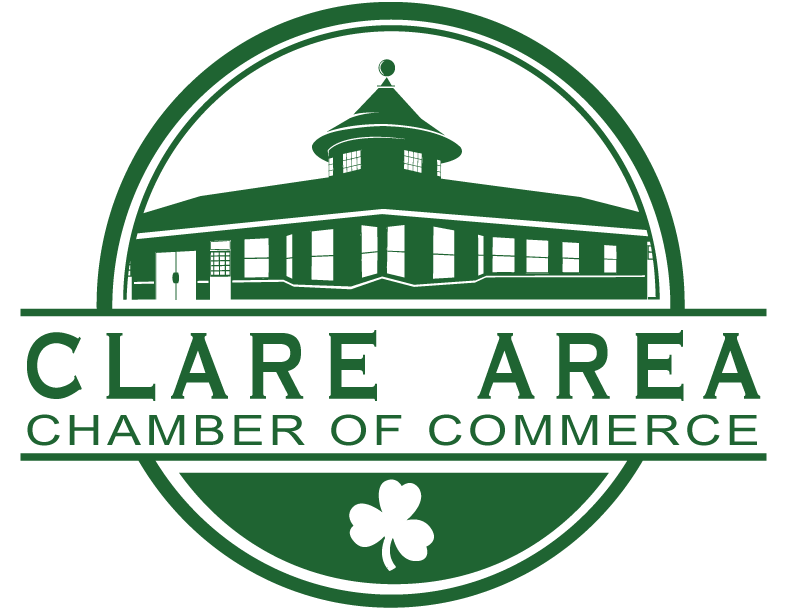HISTORY OF CLARE
In 1864, Bay City lumberman William McEwan purchased the acreage around the area that is now downtown Clare. In 1868, he established a logging camp just south of what is now the city, and began clearing timber. In 1870, the Flint and Pere Marquette Railroad extended their tracks through the area, crossing what was then known as the Isabella-Tobacco River State Road near McEwan's lumber camp. McEwen took this opportunity to plat out a city near the crossing, and by the end of 1870, a small collection of buildings had been erected in Clare, including boarding houses, a store, and a few private houses.
The commercial district grew rapidly in the 1870s. In 1878, Clare had 700 residents, over 30 commercial establishments, two churches, and more industrial employers. In 1881, an opera house opened, and in 1885 the first brick building in the city was constructed. Public water mains and telephone lines were soon installed, and by 1891 there were nearly 1200 residents in Clare, and it was incorporated as a city. Electrical service was introduced in 1894, and a number of important commercial brick structures were built in the downtown in the 1890s, culminating in Clare's largest commercial building, Alfred Doherty's no longer extant six-storefront on McEwen.
In the early 1900s, two significant fires in 1904 and 1907 destroyed a number of buildings in the downtown area, most constructed of wood. However, the buildings were quickly replaced, and from that point on, all further construction was of brick. Additional smaller fires occurred throughout the rest of the 20th century, resulting in a steady trickle of new construction of individual buildings from the 1920s through until the 1990s. Further construction occurred in the 1930s along West Fifth Street, following the construction of the Clare City Hall Building. The downtown as a whole prospered until the 1960s, when the freeway bypassed the city. However, despite economic struggles, the downtown area has retained a substantial amount of business activity(1) and is now listed on the National Register of Historic Places.
(1)Source Wikipedia

